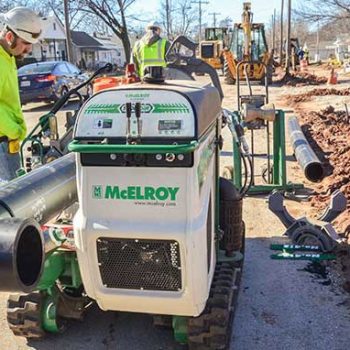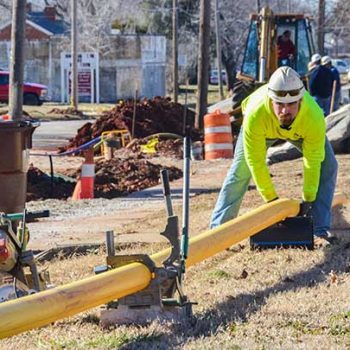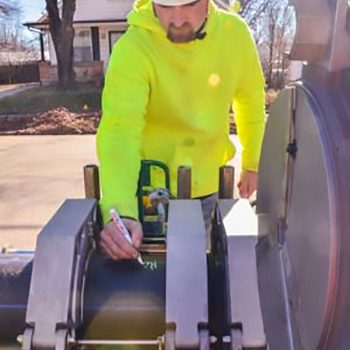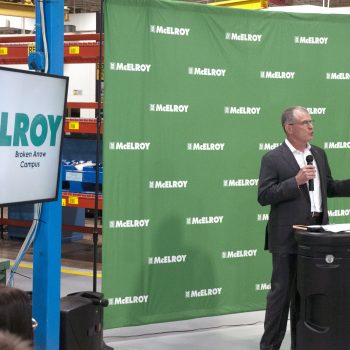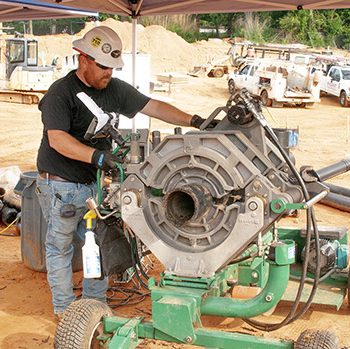Atlantic Street in Springfield, Mo., is notorious for water line breaks.
It has been cut up and torn up more times than anyone can count to make repairs on a 1925 cast iron water main that is buried only three to four feet underneath.
Any kind of weather — heat waves, cold snaps, droughts and downpours — can cause the ancient pipe to burst or rip at the joint under the patched street.
A recent polar blast that lasted roughly a week resulted in more than a dozen water main breaks, and every one of them occurred on the area’s oldest cast iron lines.
It’s a situation that City Utilities of Springfield wants to remedy, and it’s why the community-owned utility serving 110,000 customers in Missouri’s third-largest city of more than 162,000 people has started the slow process of replacing its crumbling infrastructure on a portion of Atlantic Street where some 126 water customers reside.
I believe HDPE is going to become more of a standard
One of the most critical decisions they had to make at their start of their first major renewal program was the type of pipe to use. It had to be durable and it had to outperform cast iron pipe.
CU engineer Jeff Veteto said that high-density polyethylene pipe was their top pick because of its leak-free system. Not only is it designed to prevent water breaks, it eliminates the environmental waste and costly loss of water from leaking pipes — an ongoing and common occurrence in older water lines.
Veteto said some municipalities estimate they are losing a third of their water supply to leaks. He believes CU’s water loss is no more than 10 percent but still significant and not acceptable.
“It’s an extreme amount of money to waste on treating water that’s just going into the ground,” said jobsite superintendent James Medlin of Gillespie Excavating Co., the contractor for the project. “I believe HDPE is going to become more of a standard.”
Brad Marshall, CU’s contract inspector, said that HDPE is resistant to bursting during freezing and thawing conditions because of its flexibility.
“It costs a lot of money whenever (the main) breaks. It’s an initial cost for CU to do this, but in the long run it will be a savings to have this polyethylene system in place,” Marshall said.
Gillespie, based in Strafford, Mo., is midway through the project to replace just more than a mile of the 8″ cast iron pipe with 8″ HDPE pipe.
“When we do a test, there’s no leakage. It has to be 100 percent no water leakage or it doesn’t pass,” Medlin said. Because the cast iron is being left in place under the street and the new HDPE line is being buried in a much deeper 6-foot trench between the curb and the sidewalk, they did not have to tear up the street.
They are using the same trench to install a 4″ medium-density PE pipe for gas service which is being laid carefully 12 to 18 inches above the new water main.
Medlin said that the joint trench work requires diligence. When digging, they have to be careful not to hit telephone poles or damage phone lines and other utilities in the same trench.
An essential component of HDPE pipe’s leak-free system is the way it is joined together through the butt fusion process.
CU encouraged Gillespie to use McElroy’s fusion machines which are engineered to apply the exact level of heat and pressure to seal the ends of thermoplastic pipe together. When cooled and complete, these welds are as strong as or even stronger than the pipe itself.
Gillespie used McElroy’s TracStar®412 fusion machine to fuse the 40-foot lengths of 8″ HDPE water line together. The track-mounted vehicle is self-contained and self-propelled so that it glided easily from their box truck to the jobsite. Its hydraulic features allows the operator to easily handle the pipe.
For the smaller 4″ medium-density PE gas line, Gillespie used the Pit Bull®14, which is compact and lightweight yet rugged enough to do the job.
Veteto said that he prefers the butt fusion method because you can actually see the beading form on each end of the pipe during the melting cycle. When the melted ends are forced together, these beaded ends are one sign that the fusion was done properly.
Third-party industry research indicates that HDPE pipe and joints can have a lifespan of more than 100 years.
The water main and gas line renewals are being funded by a three-year increase in utility rates that took effect in October.
Most water mains in the U.S. were unlined cast iron until the 1940s. Though replaced by ductile iron in the 70s and 80s, the EPA estimates that 40 percent of all water mains in the U.S. are still cast iron which is susceptible to corrosion, breaks and leaks.
The EPA estimates water infrastructure replacement needs nationwide at $325 billion over the next 20 years.
CU is looking at an April 1 completion date and is very pleased with the progress Gillespie has made toward that goal. The Atlantic Street water main renewal project definitely sets the stage for future projects.
“I mean from CU’s standpoint, all of our projects now are being designed with HDPE,” Marshall said.
